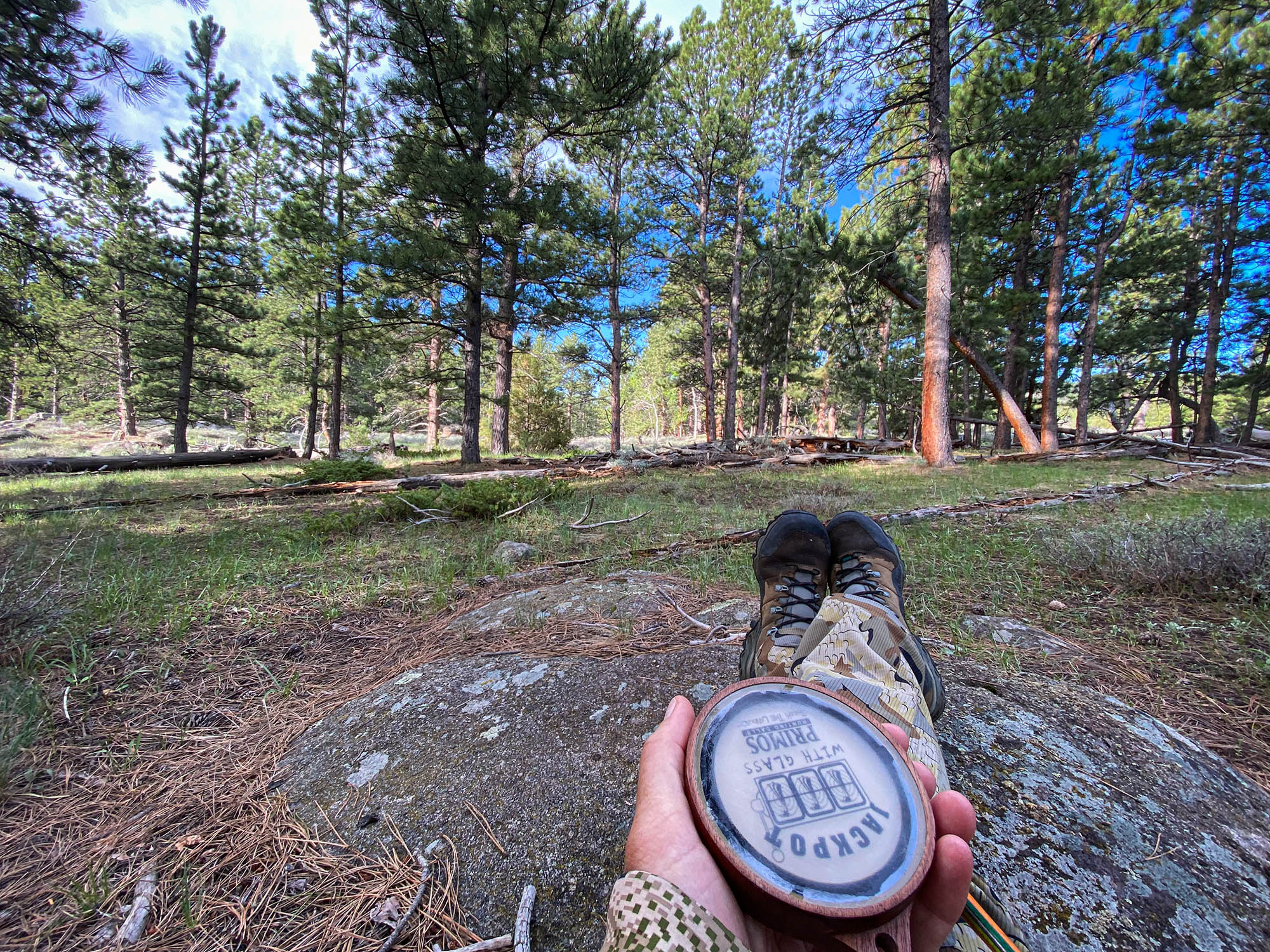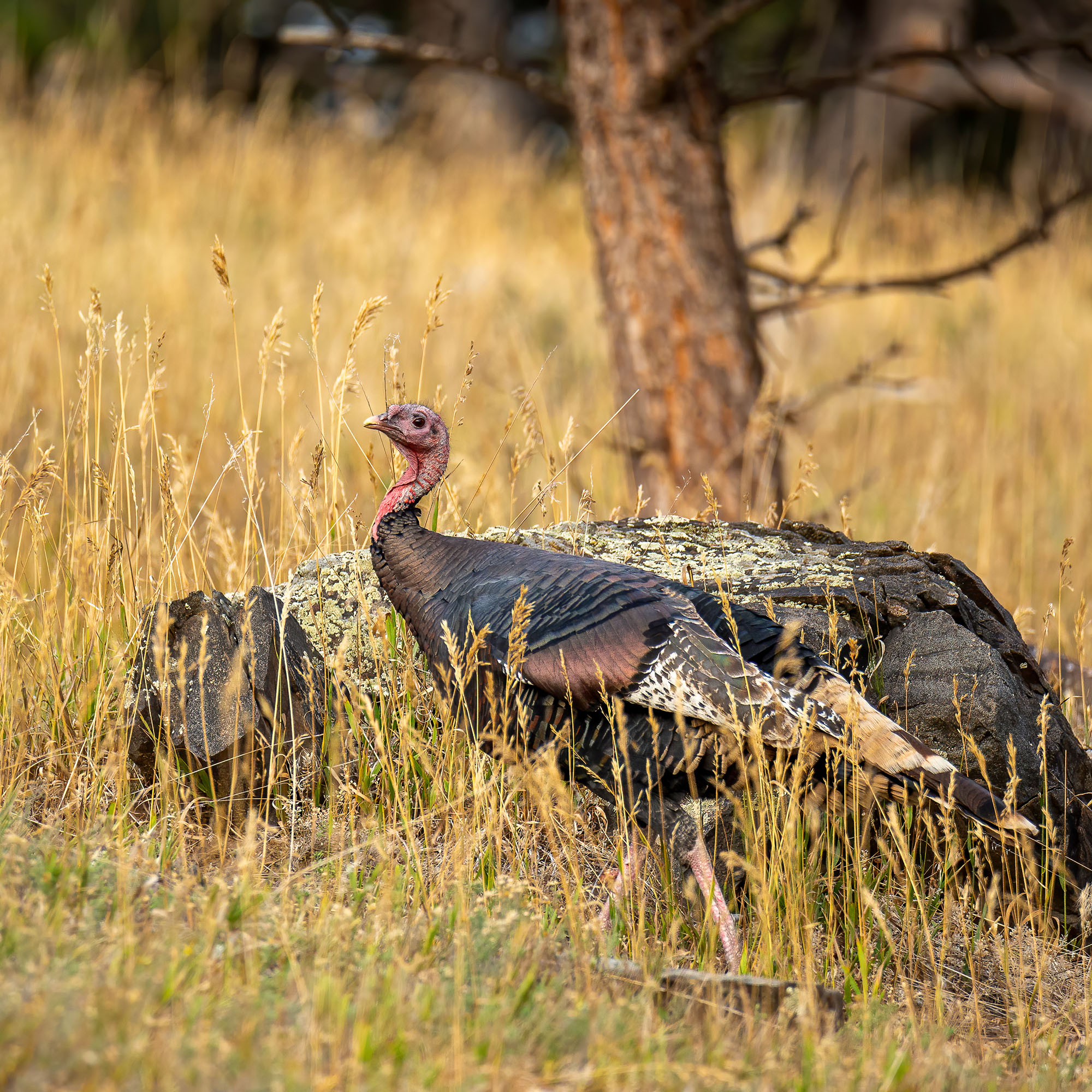We had a plan.
Correction: My hunting partners had a plan. But it sounded great to me. We would roll out at 5:10 a.m., 5:15 at the latest, and walk in the dark up a hill to where we guessed a noisy roosting turkey would head just after daybreak.
The three of us crept single file, our good buddy Brian in the lead, then me, then my husband, Josh. Both Brian and Josh had already gotten their turkeys, each calling in the other’s. Now they would help me.
They pointed to where I should sit, a spot with multiple shooting lanes. I nestled in the rocks and waited, as I was told. But the turkey had different plans (though I question if turkeys have plans). He gobbled once then went silent.
Another gobbled a few times in the distance, so the guys decided to try to strike up that bird. That didn’t work either.
Brian turned to me and whispered, “This is your tag, where do you want to go?”
I balked. “I don’t know, what do you think?”
“Christine, this is your turkey, where do you want to go?”
I froze. I didn’t know. I didn’t make decisions, not when I was with Brian and Josh. They’d taught me to hunt. They were my mentors. In that moment, it didn’t matter that I’d been hunting for over a decade now. I was still deferring to them.
Photo courtesy Christine Peterson
I tried one more time. “But really, what would you do?”
Brian was noncommittal, offering me rational for any direction we could go. I knew the look on his face. He wasn’t going to choose for me, so I mumbled something about heading down the ridge toward the turkeys we heard yesterday, and off we went.
Learn to Hunt However You Can
Most of us learn to hunt from someone. Usually we’re young, mentored by our parents, other family members, or close friends. I learned to hunt as a 20-something with Josh and Brian. I never hunted alone. There was never any reason to. Josh was going anyway, so we went together.
No one taught Mark Izard how to hunt. Still, the Arkansas native started hunting at 13, on his uncle’s 1,000-acre farm outside Little Rock.
“My dad and my uncle pretty much just gave me a shotgun and turned me loose and let me go,” says Izard, now 53. “I was just carrying a gun walking through the woods, no concept of sneaking up on anything or sitting in a spot and waiting.”
Then one afternoon, two years after he started, he found a squirrel up in a pin oak. He pointed his dad’s 16-guage and pulled the trigger.
“He fell to the ground right in front of me. I cried like a baby when I shot that thing. Part of it is because I shot something, and the other reason is I had tried so hard for the past two years to do that and it finally came together.”
“If you’re always dependent on somebody else showing you, like ‘Here’s fresh deer scat,’ or ‘We need to find a place around here to sit,’ if you don’t learn how to do that on your own, you’re never going to be successful.”
—Mark Izard
Now he takes his own kids as often as they’ll join him, and he mentors other hunters. He firmly believes that new hunters should go with someone who can show them how and where to look for sign like scat and tracks. And anyone going alone needs to be sure they can safely navigate in and out of the woods. But at some point, those lessons cease to be productive and actually begin to hold newer hunters back.
“If you’re always dependent on somebody else showing you, like ‘Here’s fresh deer scat,’ or ‘We need to find a place around here to sit,’ if you don’t learn how to do that on your own, you’re never going to be successful,” Izard says. “You’re basically going on a free guided hunt where somebody’s always showing you where to go.”
Hunting alone might be a slow way to becoming a better hunter, but Izard figures it’s pretty much the only way. That tracks with Nick Fasciano’s experience, a 38-year-old who also taught himself to hunt. Or at least, he tried.
Fasciano had never hunted before, and neither had his family. But then a lion called Cecil was shot in Africa. The hunting and non-hunting worlds exploded in debate, and Fasciano, who had spent years in East Africa in the Peace Corps, started reading about hunting and conservation, and how those were connected. That research sparked an interest. A year or so later, after taking hunter education class and scouring YouTube tutorials, internet forums, articles, and books, Fasciano left his studio apartment in San Francisco for a spot of public land to try and hunt black bear.
Each outing felt like one colossal failure after another. Once, he showed up to a wilderness area so thick with manzanita trees he couldn’t possibly weave through them, let alone find a bear. Fasciano was so desperate for help, he left notes on truck windshields at hunting areas or on vehicles in the city hunting bumper stickers, asking if someone, anyone, would take him hunting.
Finally, he showed up a hunting recruitment conference attended by hundreds of people whose job it is to increase hunting participation. He didn’t know anyone when he arrived, but he took a risk and left with an invitation to hunt with Andrew McKean, Outdoor Life’s hunting editor. That’s how he shot his first animal, a mule deer doe, putting together everything he learned through trial and error with quick lessons from an expert.
“It’s hard to know how to move through the woods, when to be patient, how long to sit in one spot,” says Fasciano. “And that’s an area where I felt like, having my learning curve shortened by hunting with people who knew more than I did was helpful just to get a sense for that.”
Those first few years were brutal, but he doesn’t regret them. And he returned from his successful mentored hunt to resume hunting alone with no reservations.
“The only way you can actually take the kinds of chances that you would take is if you’re by yourself. You’re not worried about screwing up somebody else’s hunt, you’re out there to learn about wildlife and to try and become a better hunter,” he says. “For me anyway, I don’t see any other way to do that than spending a lot of time hunting alone.”

Phot
The first time I went turkey hunting alone in the Wyoming woods where I’d hunted with mentors for years, I lost my slate call striker, my box calling sounded like a dying prairie dog, and I slipped on a lichen-covered rock in the rain and landed so hard I could feel the reverberations in my back for a week.
But I kept going and trying. My calling improved (marginally) and so did my confidence. But now that I was back hunting with my mentors — sneaking up the hill as Brian led the way — I realized I was falling into old patterns. I struggled to figure out why as we settled down to listen for gobbles. I’d hunted elk and antelope alone, and I’m not a stranger to failure.
As Brian and Josh got out their pot and box calls, I felt a wave of relief wash over me that I wouldn’t have to be the one to call. I didn’t want to squeak out a yelp in front of more experienced callers. They were in the woods to help me; I didn’t want my bad calling to spook a turkey they otherwise might have called in for me.
Then I realized: I was willing to make mistakes as long as no one watched me make them — especially my mentors.
Skip Guiding, Try Teamwork
A few weeks later, Josh, our 6-year-old daughter, and I padded through a stand of ponderosa and sagebrush. Both Josh and I stopped occasionally to call. I’d been going out alone again, regaining some semblance of confidence
Dark clouds hung on the horizon as the sun crept down. Movement caught our eyes. A tom wove through the dusty green brush. We froze, and watched the bird crest a hill 80 yards away.
If I walked fast enough and ducked low enough, I could potentially get above him on the ridge. Josh could call him in for me, I thought. But Josh said he would hang back with our daughter.
“You’re best going on your own.”
When I reached the top of the ridge, I saw a hen step behind a rock. I crouched under a tree, waited, then called. Another hen responded. I scratched back. We called back and forth before I saw her about 30 yards away. The tom gobbled not far behind. When both turkeys walked behind bushes, I put my call down and raised my gun.

Photo
As the hen closed the distance, my heart was calmer than I’d expected. This was all on me, no one around to tell me what to do. No one to see if I screwed up.
I stayed still. The tom emerged just out of shooting range. He had two choices: Follow the hen who was pecking the dirt 5 feet from me, or head her off by slipping behind a pile of boulders. I don’t know how long I held my breath before the tom decided. Gobbling and strutting the whole way, he went behind the boulders.
The hen wandered behind another rock, and I called again. I could hear Josh clucking faintly in the distance.
Read Next: The Best Turkey Calls, Tested and Reviewed
The wind ripped through the ponderosas as the sky darkened. We kept calling. The tom kept gobbling as he drifted away.
I knew I wasn’t going to shoot that tom as a storm built and the sun set, but it almost didn’t matter. I’d called convincingly enough to bring in a hen. Josh wasn’t guiding me. Instead, we were working those birds together, as a team.
When I was sure I wouldn’t bust the hen, I stood up. That, I decided, was enough hunting for one day.
